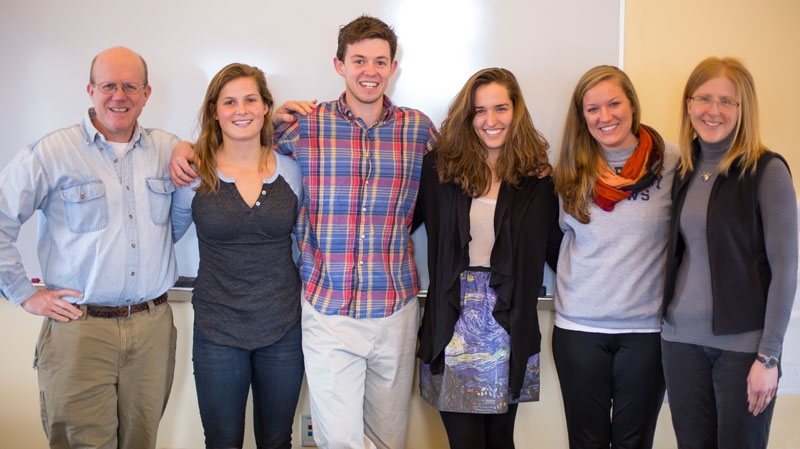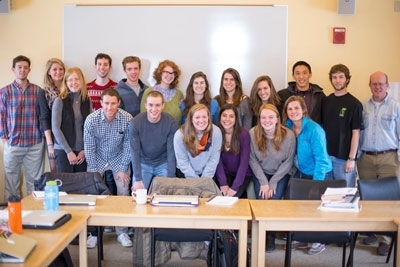Innovation in Rutland is Focus of Middlebury College Course

MIDDLEBURY, Vt.– How do Rutland’s citizens use local food sources? What will the city’s energy needs be in the future? How can Rutland Mayor Christopher Louras’ office identify community groups to keep the city resilient in disasters similar to Hurricane Irene? These are some of the questions that a Middlebury College class will soon ask Rutland residents as the students begin their work in the community collaborating with local organizations on projects related to food, energy, resources, and storytelling. The theme of the class, an environmental studies senior seminar with 16 students, is “Innovation in Rutland.” The students’ goal is to gain direct experience with issues they are studying in the classroom while advancing the community initiatives of their local partner organizations.
“Middlebury students take great pride in their involvement in the Addison County community,” said Middlebury College Professor of Economics Jon Isham, who teaches the course. “This class offers a wonderful chance to engage in the life of Rutland, a vibrant city full of promise. As a professor, I look forward to the students’ opportunity to learn from the mayor and other community leaders.”
Vermont’s third largest city, Rutland has struggled publicly with such problems as unemployment, but it has also launched creative projects that foster growth and strengthen ties between neighbors. Isham was drawn to Rutland both because of the city’s leadership on a wide array of initiatives and because students can engage the challenges and complexity of environmental work in a diverse community.
The class is divided into four groups, each of which is working on a project with a community partner. One group of students will collaborate with the Rutland Area Food and Farm Link to help the organization reach a wider audience with its message about the benefits of local food. Another will work with Green Mountain Power to look at the area’s future demand for electricity and what steps the city can take to increase its focus on renewable energy, especially solar power.
A third group will work with Mayor Louras’ office to help build a community asset map for the Rutland region, a project that was started by a previous Middlebury College environmental studies class in 2013. The map reflects how different individuals and organizations in the state cooperate around the theme of resilience to climate change and where gaps in partnerships exist—an important resource given that Rutland has been a FEMA disaster area twice since 2007.

The fourth set of students will work with two local organizations, Rutland’s Creative Economy initiative and the Carving Studio and Sculpture Center, to gather stories about Rutland’s growing creative economy from civic leaders and studio members. The students, with help from the Carving Studio, will share the stories of innovation and new ideas with the community and the rest of the state.
“I encourage the people of Rutland to enthusiastically welcome the students as they begin their work,” said Mayor Louras. “Their projects will benefit the region and help more people learn about what Rutland has to offer.”
The class will work on their projects through May 20. Some of the students will interview community members. Others may also conduct a survey or share information via the local media and then request comments from the public. The class plans to present the results of its work in early May in Rutland.
“I’m looking forward to putting into practice what we’ve learned in the classroom,” said Hannah Bristol, a Middlebury College senior and a student in the class. “I’m also excited to explore a new part of Vermont and meet people doing some incredible work in their community.”
By Sarah Ray, Photos by Matt Lennon ‘13

